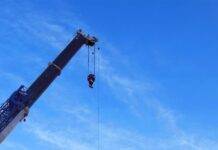
SWL Calculation Formula
Introduction
Understanding the SWL (Safe Working Load) calculation formula is crucial across various industries where safety and efficiency are paramount. This article delves into the significance, factors, application, misconceptions, and benefits associated with SWL calculations.
Importance of SWL Calculation
SWL calculation is integral to workplace safety, ensuring that equipment and structures operate within safe limits. It prevents overloading and minimizes the risk of accidents, safeguarding both personnel and assets.
Factors Affecting SWL
Various factors, including material strength, angles, environmental conditions, and dynamic loads, influence the SWL. Understanding these variables is essential for accurate calculations.
SWL Calculation Formula
The SWL calculation formula typically involves assessing material properties, load configurations, and safety factors. A fundamental formula includes considering the material’s yield strength and applying appropriate safety margins.
Application in Different Industries
Industries such as construction, manufacturing, and transportation heavily rely on SWL calculations. Examples highlighting its use in crane operations, lifting equipment, and structural engineering showcase its diverse applications.
Safety Considerations
Ensuring safe working conditions involves not only accurate calculations but also adherence to safety protocols and regulations. Proper training and periodic equipment inspections contribute significantly to maintaining safety standards.
Common Misconceptions
Misunderstandings about SWL calculations can lead to improper usage and safety hazards. Addressing misconceptions, such as neglecting dynamic loads or disregarding environmental factors, is crucial.
Benefits of Accurate SWL Calculations
Precise SWL calculations result in enhanced operational efficiency, reduced downtime due to accidents, and increased equipment lifespan. Businesses benefit from optimized processes and improved safety records.
How to Perform SWL Calculation
A step-by-step guide simplifies the SWL calculation process, ensuring accuracy and reliability. Understanding load factors, angles, and equipment capabilities streamlines the calculation process.
Tools and Resources
Utilizing tools like load calculators, charts, and software aids in performing SWL calculations efficiently. These resources provide valuable assistance, especially for complex scenarios.
Case Studies
Real-world examples elucidate the significance of accurate SWL calculations. Case studies involving successful implementations and instances highlighting the consequences of inaccurate SWL assessments offer practical insights.
SWL Calculation in Compliance
Compliance with industry standards and regulations is imperative. Meeting guidelines ensures legal adherence and upholds safety standards within the workplace.
Future Developments
Ongoing advancements in technology and materials influence the evolution of SWL calculation methodologies. Innovations promise more precise and efficient ways to determine safe working loads.
Conclusion
Understanding the SWL calculation formula is vital for maintaining safety standards and optimizing operations across industries. Accurate calculations, adherence to safety protocols, and leveraging available resources contribute to safe and efficient working environments.
How To Calculate Crane Capacity According to Load
Web Sling Capacity Calculation
FAQs
- Why is SWL calculation important? SWL calculation ensures that equipment operates within safe limits, preventing accidents and enhancing operational safety.
- What factors affect SWL? Material strength, load configurations, environmental conditions, and safety margins are key factors influencing SWL.
- Are SWL calculations necessary in all industries? Yes, industries like construction, manufacturing, and transportation heavily rely on SWL calculations to maintain safety standards.
- How can I perform SWL calculations accurately? Following a step-by-step guide, considering load factors, and utilizing appropriate tools ensure accurate SWL calculations.
- What are the benefits of accurate SWL calculations? Accurate SWL calculations lead to enhanced operational efficiency, reduced downtime, and improved safety records.

























Hello